Daisy Kenyon

Brief Synopsis
Cast & Crew
Otto Preminger
Joan Crawford
Dana Andrews
Henry Fonda
Ruth Warrick
Martha Stewart
Film Details
Technical Specs

Synopsis
Successful attorney Dan O'Mara visits the Greenwich Village apartment of his mistress, Daisy Kenyon, a magazine illustrator, to cancel a date, explaining that he has been summoned to Washington on business. Daisy, upset, threatens to break off their relationship but soon relents. As Dan leaves the building, he hails the taxi that discharges Peter Lapham, a soldier Daisy met at a party the previous evening, who has come to take her to dinner. At his Park Avenue home, Dan argues with his nagging wife Lucile about her abusive treatment of their youngest daughter Marie. That night, as Peter and Daisy wait for a table at the exclusive Stork Club, Dan enters with his family, and when he arranges for Daisy to get a table, Daisy, angered at his deception, insists on leaving. As Peter walks Daisy home, he impetuously blurts out that he loves her and promises to call Sunday morning to take her to a baseball game. When Peter has not called by midday Sunday, Daisy agrees to meet Dan, who is returning from Washington. Dan informs Daisy that he is going to represent a young Japanese-American war hero whose farm had been confiscated by the U.S. government. When Dan tells Daisy that he must cancel their date to discuss the case with Coverly, his law partner and father-in-law, Daisy, annoyed, makes plans to go to a movie with her friend and model, Mary Angelus. Soon after, Peter phones, and Daisy, still angry, refuses to see him. Peter follows Daisy to the movie, and when she returns home, he pounds at her door and apologizes for forgetting to call her. Confessing to Daisy that she has brought the only happiness into his life since the death of his wife Susy, and his brutal combat service in the war, he proposes and Daisy agrees to give him another chance. After spending eighteen days in California working on the Japanese-American soldier's case, Dan returns to New York and discovers that Daisy has married Peter. Soon afterward, the newlyweds move to Cape Cod, where Peter had lived with Susy and pursued a career as a ship builder. One night, Peter awakens from a terrible nightmare about Susy and comments that Daisy has never told him that she loves him. One rainy day, Daisy finally declares her love to Peter. Soon after, Daisy is called to New York to work on a project and Peter stays behind to work on a boat. Daisy moves into her old apartment with Mary, and one day, Dan, returning home from California after losing his case, absentmindedly gives the cab driver Daisy's address. Although Daisy asks Dan to leave, he forces himself on her, and she breaks free just as Mary enters the room. Upon returning home, Dan sullenly locks himself in his study and Lucile, concerned, listens at the door and overhears Dan calling Daisy to apologize. Picking up the extension phone, Lucile hears Dan profess his undying love to Daisy. Stunned, Lucile breaks into the conversation and Dan, furious, threatens to kill her. Later, Coverly informs Dan that Lucile wants a divorce and proposes that she be granted custody of their two daughters. Dan refuses and then informs Coverly that he is withdrawing from their law firm. Without Daisy's knowledge, Dan invites Peter to New York and takes him to meet Daisy at his private club. There, Dan informs Daisy that Lucile intends to name her a co-respondent in their divorce case. Peter, still unsure of Daisy's love, offers to free her from their marriage and abruptly leaves. At the trial, Dan discovers that Lucile has unleashed her anger on Marie, battering the child's ear. During Daisy's testimony, Lucile's lawyer begins to probe into her private life, and Dan, unable to tolerate her humiliation, realizes how much he loves her and agrees to grant Lucile a divorce on her terms. Dan then sends for Peter and asks him to sign divorce papers so that he can marry Daisy. Peter, dispirited, is about to sign when he learns that Daisy has not been consulted. Daisy, meanwhile, decides to go to the Cape alone to sort out her feelings. Upon discovering that Peter and Dan have followed her there, Daisy, panicked, speeds away in her car and flips it over on an icy road. Stumbling out of the wreck in a daze, Daisy returns to the cabin to find Peter and Dan waiting to plead their cases. As Peter waits outside in the cab that drove them to the cabin, Dan begs Daisy to marry him. Daisy replies that her accident made her realize that she no longer loves him and that his first duty is to his children. Defeated, Dan drives off in the cab as Peter rejoins Daisy in their cabin and they embrace.

Director

Otto Preminger
Cast

Joan Crawford

Dana Andrews

Henry Fonda
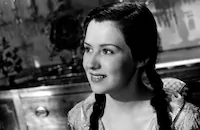
Ruth Warrick

Martha Stewart
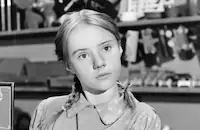
Peggy Ann Garner

Connie Marshall
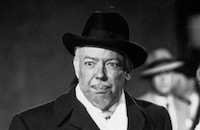
Nicholas Joy
Art Baker
Robert Karnes
John Davidson
Victoria Horne
Charles Meredith

Roy Roberts

Griff Barnett

Tito Vuolo
Walter Winchell
Leonard Lyons

John Garfield

Marion Marshall
Ann Staunton
Les Clark
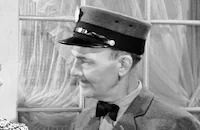
John Butler
Jimmy Ames
Norman Leavitt
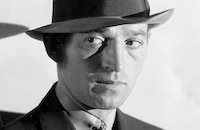
George E. Stone
Roger Neury
Don Avalier
Mauritz Hugo
Monya Andre
Robert Cole
Sport
Crew
George Davis
Tom Dudley
A. F. Erickson
Eugene Grossman
Roger Heman
David Hertz
R. A. Klune
George Lane
Charles Le Maire
Thomas Little
Louis Loeffler
Marian Mitchell
Alfred Newman
Ben Nye
Edward Powell
Otto Preminger
David Raksin
Walter M. Scott
Fred Sersen
Leon Shamroy
Lyle Wheeler

Photo Collections
Film Details
Technical Specs

Articles
Daisy Kenyon
A melodrama with film noir elements, Daisy Kenyon stars Joan Crawford as a Manhattan magazine illustrator who is, for unexplained reasons, stuck with choosing between two unappealing suitors -- a married-with-kids lawyer and an unsophisticated, neurotic soldier. True, these men are played by Dana Andrews and Henry Fonda, respectively, but that is the only reason anyone might think that either man could possibly be worthy of Crawford's affections. While Daisy's age is never specified in the film, in the novel she is 32. Regardless, she is getting too old to remain alone and presumably needs someone -- even a very flawed choice like each of the two she is presented with. Off screen, 43-year-old Crawford was no ingenue herself (especially in Hollywood terms), and she was desperate to prove to her home studio of Warner Brothers that she could still handle romantic roles. When she heard that Preminger was to direct this picture, she implored him for the role and successfully got a loan-out to Fox.
Ironically, she was the only one of the three leads who wanted to make the film. Neither Andrews nor Fonda thought much of the script. Andrews did it because he believed he might otherwise be sued by the studio, and Fonda did it simply to fulfill his Fox contract. Fonda was happy to be leaving Fox because he felt he had lately not been getting the plum roles he wanted, and Daisy Kenyon proved his point. The role of Daisy provided some casting trouble before Crawford came along. Fox actually bought the property for Gene Tierney, and after that didn't work out, Preminger had tried for Jennifer Jones.
Preminger and Crawford got along very well. As supporting player Ruth Warrick later observed, "With Otto and Joan, we had two tyrants on the set, and that may have kept both of them in line. I think each of them sensed the potential ferocity of the other. Quite unlike Otto, Joan was very secretive. You could never quite tell what she was thinking, although you felt she had an underlying anger at the world. Quite like Otto, however, she was used to being in command. She demanded deference, and she insisted on protocol because she came from such desperately low circumstances. She was polite to the men in the company, as you would be to a maid, but she didn't acknowledge I was alive; we were like boxers across the room, and I was just as glad because I didn't want to tangle with her."
The Daisy Kenyon shoot was problem-free, wrapping two days ahead of schedule and less than $100 over the $1.852 million budget. According to Warrick, Preminger did not yell on set. He was courteous and professional; he "carried himself like an army officer, and behaved like a general moving the troops. There were no fishing expeditions with Otto. No one, including Joan, ever argued with him; we all trusted his intelligence. But I think we all sensed he could cut you down to size."
The only wrinkle on the set was the temperature. Crawford had a clause in her contract that kept the set at fifty degrees because of her hot flashes. As a result, said Warrick, "she was always in tennis shorts and a thin blouse because she was so hot, while I had to wear a fur coat to keep warm. Otto said not one word about the temperature." Fonda and Andrews weren't happy about the cold either, and one day Crawford presented them with sets of long underwear.
Crawford also gave Preminger a present when production wrapped: a set of gold cufflinks. Preminger was pleased, but later learned that "she always gave her director cufflinks at the conclusion of shooting. Once at a party there were four of us wearing identical sets."
Critics liked Daisy Kenyon, with the New York Herald Tribune declaring, "Preminger accomplishes no mean feat in guiding these people in and out among the interweavings of their own complexes, and he does wonders in varying the action of similar scenes." The New York Times said, "Joan Crawford is having man trouble again... Miss Crawford is, of course, an old hand at being an emotionally confused and frustrated woman, and she plays the role with easy competence."
Within months of Daisy Kenyon's release, Crawford was nominated for an Academy Award -- not for Daisy Kenyon but for her other 1947 movie, Possessed, which she made at Warner Brothers. She'd be nominated one further time, for Sudden Fear (1952).
The bulk of Daisy Kenyon was shot on studio sets, with only a few establishing location shots of the real Greenwich Village shot by a second unit. Famed newspaper columnists Walter Winchell and Leonard Lyons appear as themselves at the Stork Club. And truly eagle-eyed viewers will catch a quick profile of John Garfield in a Stork Club crowd scene.
Producer: Otto Preminger
Director: Otto Preminger
Screenplay: David Hertz (screenplay); Elizabeth Janeway (novel)
Cinematography: Leon Shamroy
Art Direction: George Davis, Lyle Wheeler
Music: David Raksin
Film Editing: Louis Loeffler
Cast: Joan Crawford (Daisy Kenyon), Dana Andrews (Dan O'Mara), Henry Fonda (Peter Lapham), Ruth Warrick (Lucille O'Mara), Martha Stewart (Mary Angelus), Peggy Ann Garner (Rosamund O'Mara), Connie Marshall (Marie O'Mara), Nicholas Joy (Coverly), Art Baker (Lucille's Attorney).
BW-99m.
by Jeremy Arnold
Sources:
Foster Hirsch, Otto Preminger: The Man Who Would Be King
Lawrence Quirk, The Complete Films of Joan Crawford
Bob Thomas, Joan Crawford

Daisy Kenyon
Daisy Kenyon - Joan Crawford, Dana Andrews & Henry Fonda in DAISY KENYON on DVD
The picture is full of heavy hitters. Its three stars are Joan Crawford, Dana Andrews and Henry Fonda, and its producer/director is Otto Preminger, whose most recent film, Forever Amber (1947), had opened just two months earlier. While Daisy Kenyon is far from Preminger's best work, or even best noir (see Laura [1944], Where the Sidewalk Ends [1950] or Angel Face [1952]), it's still of significant interest to fans of Preminger and Crawford in particular.
Essentially, Daisy Kenyon is about a romantic triangle, with Crawford's Daisy, a successful magazine illustrator, unable to pick between Andrews (married businessman with two kids) and Fonda (socially awkward soldier). Why she is stuck with this particular choice is never explained. Daisy is getting too old to remain single - which here means she's in her thirties - and presumably these just happen to be the two guys in her life at the moment.
The problem with the movie is, they're both pretty lousy choices. Fonda is a schlub, and Andrews is a jerk. Fonda is strangely unemotional and psychologically unstable, not really over the death of his wife, and he's also just plain weird; when he proposes to Crawford at one point, he says "you have such nice ears" in the same breath. Andrews is an operator who calls all women "honeybunch," treats his wife like dirt, and is a poor, absent father to his adoring daughters. The script does draw out some complexities in the men, but nonetheless the impression of schlub/jerk remains to the end. It's not really the fault of the actors, though neither one (especially Fonda) really wanted to make this film.
By comparison to the men, the character of Daisy comes off as sympathetically lonely and relatable. "I can't wander all my life. I've got to be going somewhere," she tells Andrews. The story is grounded largely through Daisy's dilemma and uncertainty, which saves the movie because Crawford acts the part so very well (no overacting here), and because the nature of the story so perfectly suits Preminger's naturally "objective" style of filmmaking. His visual presentation asks audience members to consider the characters equally and to decide for themselves what to think of them. Ambiguity in a story is inherently appropriate for a storyteller like Preminger.
The tone of the picture takes something of a shift to "domestic noir" territory late in the game, when Fonda suffers from a nightmare and Andrews physically attacks Crawford. Leon Shamroy's beautiful black-and-white cinematography throughout also injects some noir style. It's been well transferred to DVD, though the print quality is a bit uneven.
Fox has supplied the DVD with its usual generous extras, including a 21-minute documentary on Preminger's career at Fox, which uses good clips and knowledgeable film historians (Robert Osbourne, Eddie Muller, Rudy Behlmer, Alan Rode), though it could have delved more deeply into Preminger's unique visual style and what that brought to his noir films in comparison to others of the movement. There's also a commentary by Preminger biographer Foster Hirsch, a trailer, stills, and an interactive press book. Finally, there's a featurette on the making of Daisy Kenyon itself. One interesting fact is that Crawford had a clause in her contact stipulating that the temperature on set be maintained at a constant 50 degrees F. due to her hot flashes. The actress was 43, portraying a character aged 32 (the age is specified in the novel), and she was eager to play the role as a way of proving to her home studio, Warner Brothers, that she could still play young romantic leads.
Fox Home Entertainment excels at presenting its catalogue titles on DVD, from big star-powered films like this one down to its popular "B" movies, like the Charlie Chan series. (The recent Charlie Chan Volume 4 is another exceptional release.) The care Fox puts into these titles makes them a real pleasure to watch and discover.
For more information about Daisy Kenyon, visit Fox Home Entertainment. To order Daisy Kenyon, go to TCM Shopping.
by Jeremy Arnold
Daisy Kenyon - Joan Crawford, Dana Andrews & Henry Fonda in DAISY KENYON on DVD
Quotes
Trivia
Notes
According to a July 1945 Hollywood Reporter news item, Twentieth Century-Fox purchased the rights to Elizabeth Janeway's novel for $100,000, intending to star Gene Tierney in the title role. By January 1946, a Hollywood Reporter news item announced that Jennifer Jones was being sought to star in the film. According to publicity materials contained in the film's production files at the AMPAS Library, Joan Crawford wanted to buy the rights to the novel for herself, but Fox purchased them before she had a chance to bid. According to materials contained in the Twentieth Century-Fox Produced Scripts Collection, located at the UCLA Arts-Special Collections Library, Margaret Buell Wilder and Ted Sills wrote an incomplete first draft of the screenplay in August 1945. In May 1947, Ring Lardner, Jr. was hired to revise David Hertz's screenplay, but the extent of their contributions to the final screenplay has not been determined. According to materials in the files on the film at the MPAA/PCA Collections at the AMPAS Library, the PCA was concerned about the film's "lack of regard for the sanctity of marriage." To ameliorate the situation, the studio was instructed to "avoid any inference of illicit sex" and to emphasize the "wrongness" of "Dan" and "Daisy's" relationship. The PCA also suggested a reunion between Dan and "Lucile."
According to other materials contained in the Produced Scripts Collection, exteriors were filmed at the Greenwich Theatre in New York. Margaret Brayton was hired to play a secretary, but her appearance in the released film has not been confirmed. Marian Mitchell, who worked as Crawford's art coach on the production, was a well-known artist, according to a June 1947 Hollywood Reporter news item. Crawford was borrowed from Warner Bros. to appear in the picture. A modern source states that Fernando Lamas appears as one of the men at the Stork Club bar. On April 5, 1948, Lux Radio Theatre broadcast a radio version of Janeway's novel, starring Ida Lupino and Dana Andrews.















